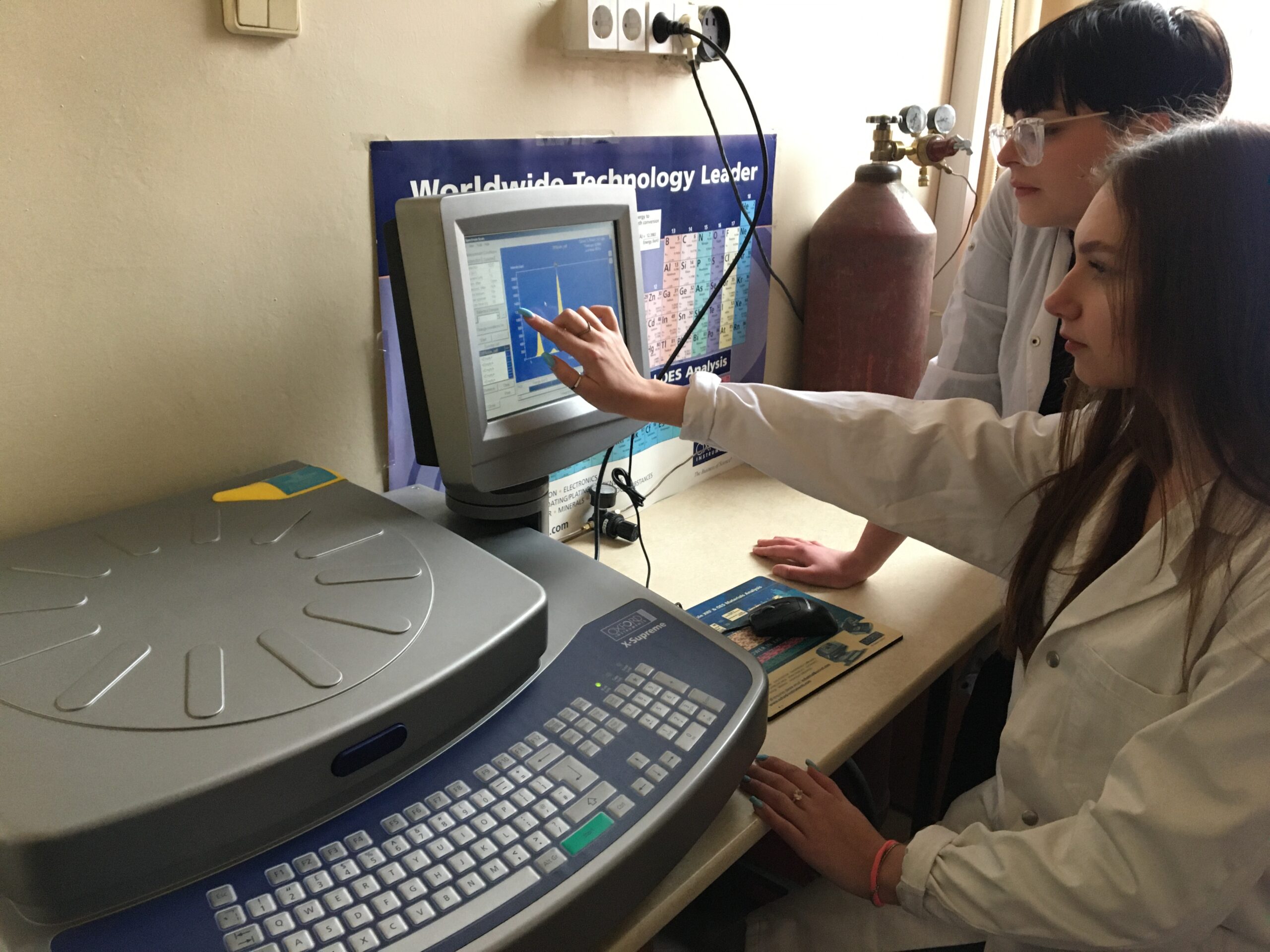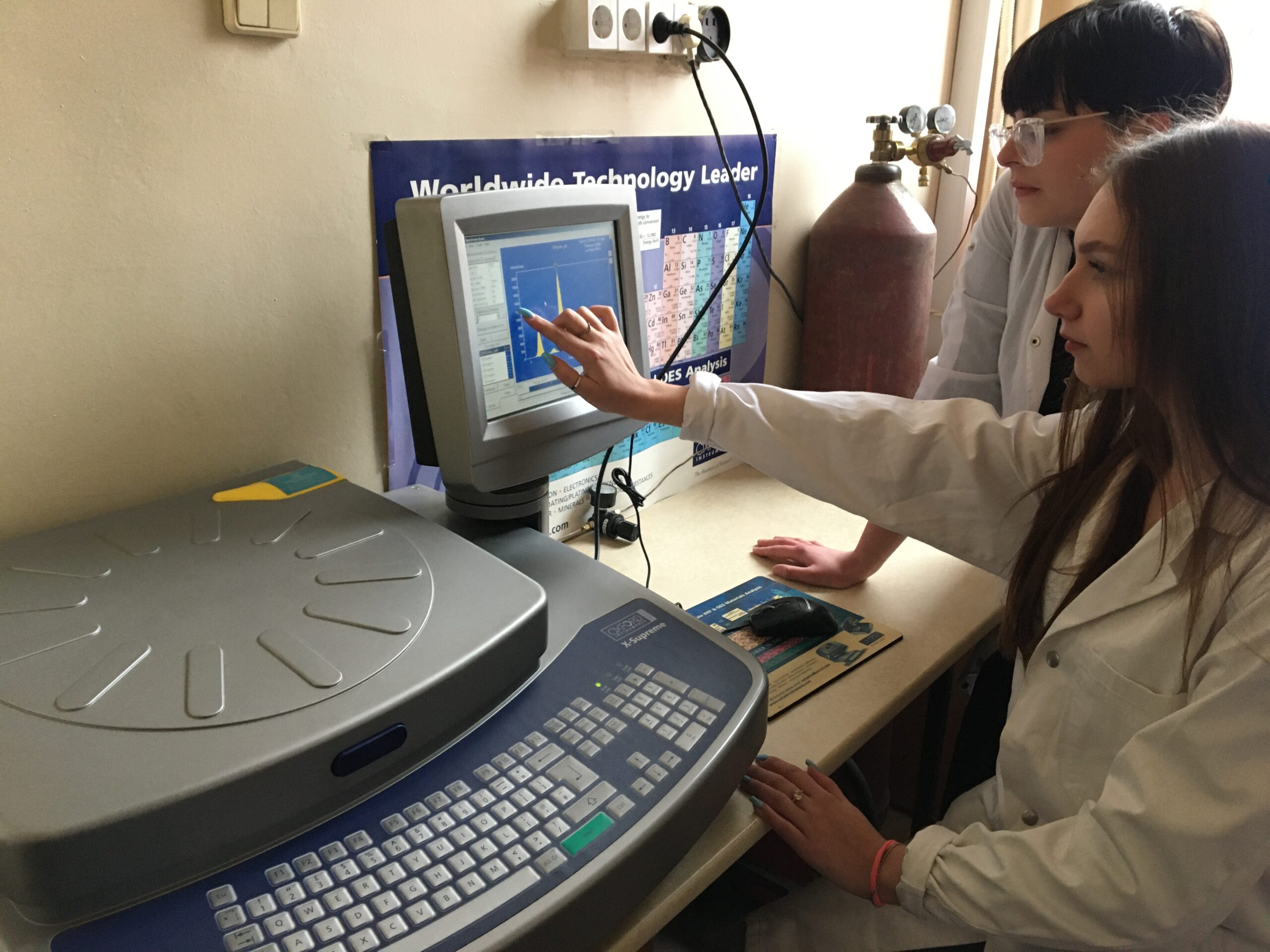08 January 2024 — The dedicated team at KNUTD continues to enhance the high-efficiency purification of natural flake graphite through meticulous chemical treatments
The project’s Work Package 2, led by Kyiv National University of Technologies and Design (KNUTD), focuses on crucial specifications and raw material procurement for the development of a more sustainable graphite purification process.
We have asked KNUTD Professor Volodymyr Khomenko, DScTech, to walk us through the process and explain how this work is crucial to the success of the project.
Prof. Khomenko, what is an adequate graphite purification process for GR4FITE3?
The choice of purification techniques largely depends on the type of impurities present in natural graphite and the desired end-use of the product. The battery-grade graphite used in lithium-ion batteries typically requires very high purity levels (over 99.9%). An adequate graphite purification process for the GR4FITE3 project is selected based on the requirement for a high purity level. This commonly involves a combination of physical and chemical methods. The bases for purification techniques of GR4FITE3 are as follows:
Acid Leaching: This widely used method purifies graphite by treating it with acids. The GR4FITE3 project aims to develop HF-free techniques for purification.
Alkali Roasting: In this method, graphite is heated with alkaline substances like sodium hydroxide, effectively removing silicate impurities. New reagents are being developed to decrease the temperature requirements and the amount of washing water needed.
Thermal Purification: Here, graphite is heated to very high temperatures (typically above 2500°C) in an inert gas atmosphere. This method helps remove non-graphitic carbon and other impurities. The Institute of Gas (IG) is developing new reactors for this purification process.
Both Chemical and Thermal methods are an adequate graphite purification process for GR4FITE3 project. Thermal purification is more effective but costlier than chemical purification processes. On the other hand, chemical purification methods are not environmentally friendly. The main goal of GR4FITE3 is to find optimum technology concepts for both methods.
Can you provide an overview of the ongoing work?
KNUTD is developing a one-stage chemical purification process for natural graphite with varying levels of contamination. Initial study results suggest that the desired level of material purification (over 99.9%) has been achieved. Further enhancement of the material’s properties can be attained by optimizing the surface and shape of the graphite particles. Currently, KNUTD is capable of providing up to 100 grams of material for research within Work Packages 3 and 4. However, the chemical purification process requires the construction of a pilot line and scaling up of the process.
KNUTD is also focusing on quality control of graphite materials. Throughout the purification process, various characterization techniques are employed to analyze the graphite’s purity and quality. These activities include electrochemical investigation, scanning electron microscopy, and other physico-chemical analysis methods (such as RFX, AAS, etc.).
PhD and MS students are involved in the physico-chemical analysis of graphite materials and anodes derived from them. Participation in real-world projects enables these students to apply their theoretical knowledge and develop practical skills. Additionally, students can contribute new, innovative ideas to a project. Their fresh perspectives have the potential to inspire novel approaches and solutions.
Why are fluorine-free techniques relevant to the scope of the GR4FITE3 project?
Fluorine-free techniques are particularly relevant in the context of developing battery-grade graphite due to several key factors:
- Residual fluorine from purification processes can contaminate the graphite. The presence of fluorine can impact the electrochemical properties of graphite, which in turn can affect the efficiency, charging rates, and energy density of lithium-ion batteries. Ensuring the absence of fluorine contaminant is crucial for optimal battery performance.
- Employing fluorine-free purification methods aligns with the industry’s shift towards more sustainable and eco-friendly production practices, reducing the overall environmental footprint of battery manufacturing. Also, fluorine compounds used in purification are highly corrosive and toxic, posing risks during handling and disposal. In the context of large-scale production for batteries, minimizing these risks is crucial for worker safety and environmental protection.
- The battery industry is subject to stringent environmental regulations, especially as Europe strives to prioritize green energy and sustainable practices. Using fluorine-free purification methods can help manufacturers comply with these regulations and avoid potential penalties.
- Batteries made from graphite purified without harmful chemicals can be more appealing to environmentally conscious consumers and businesses. Thus, fluorine-based purification might be effective, the associated costs of handling, neutralization, and disposal of hazardous materials can be high. Fluorine-free techniques could potentially offer a more cost-effective solution in the long term, especially considering potential environmental clean-up costs.
In summary, the relevance of fluorine-free techniques in developing battery-grade graphite lies in their ability to meet high purity standards, ensure safety, reduce environmental impact, comply with regulations, cater to market demands, and potentially offer cost benefits.
In the context of WP2 KNUDT also works on recycling graphite materials. Will this process be applied to both natural and recycled graphite? Why is this important?
Recycling graphite materials is crucial in the context of sustainable development and efficient resource use; it reduces reliance on natural graphite mining, helping to conserve this valuable material for future use. This is particularly important as demand for graphite, especially in high-tech applications like batteries, is rapidly increasing. The main benefits of recycling graphite materials include:
- Chemical purification of natural graphite can lead to significant environmental impacts, such as habitat destruction, water pollution, and greenhouse gas emissions. Recycling graphite diminishes the need for these environmentally harmful activities.
- The demand for battery-grade graphite is surging with the growth in electric vehicle production and other battery-powered technologies. Recycling graphite from spent batteries and other sources is an alternative way to meet this demand.
- Recycling is often more cost-effective than extracting and refining new graphite. It reduces waste disposal costs and can generate economic opportunities in the recycling industry.
- With global environmental regulations becoming stricter, companies are encouraged or mandated to adopt recycling and sustainable practices. Recycling graphite is in line with these regulatory frameworks.
In summary, recycling materials generally requires less energy compared to extracting and processing natural graphite. Consequently, recycling battery graphite leads to lower energy consumption and a reduced carbon footprint. It also plays a significant role in waste management, particularly for spent batteries and electronic devices. Proper recycling practices can prevent graphite containing dangerous chemicals from being discarded in landfills, thereby avoiding pollution and waste management problems.
What is next for Work Packge 2?
KNUTD’s ongoing efforts aim to replace traditional, harsh chemical treatments with more eco-friendly alternatives, including the use of less toxic chemicals. The goal is to minimize or eliminate the use of hazardous substances, such as hydrofluoric acid. Reducing the energy consumption of the purification process is crucial. Innovations might include low-temperature processing techniques or energy recovery systems, making the process more efficient and less carbon-intensive.
Water management is another critical aspect. Developing closed-loop systems to recycle and reuse water in the purification process can significantly reduce water consumption and minimize wastewater discharge. Minimizing waste generation during purification and responsibly managing any waste produced are key objectives. This includes finding uses for by-products and developing processes that yield minimal waste.
Research and development efforts are focused on scaling up new methods while maintaining efficiency, cost-effectiveness, and environmental benefits. Physico-chemical analysis of graphite materials is essential to understand graphite quality, purity levels, and production scale. This can guide the development of environmentally responsible purification processes.
KNUTD’s ongoing collaborations with partners like CEA and CIDETEC are crucial in developing silicon-graphite composites for the anodes of lithium-ion batteries. Silicon has a much higher theoretical capacity for lithium storage compared to graphite (about 10 times higher). By combining silicon with graphite in the anode, the overall energy density of the battery can be significantly increased. The incorporation of graphite helps balance the high capacity offered by silicon with the stability provided by graphite, resulting in a high-performing and durable anode material. This development also involves innovations in binders and conductive additives, essential for maintaining the anode’s integrity and conductivity.
Last but not least, KNUTD is focusing on innovations in graphite recycling technologies to enhance the efficiency and effectiveness of these processes. Developing composites based on recycled and natural graphite for lithium-ion battery anodes represents a significant stride towards more sustainable, cost-effective, and environmentally friendly battery production. This approach not only reduces the fabrication cost of batteries but also aligns with global trends in resource conservation, the circular economy, and environmental stewardship.


